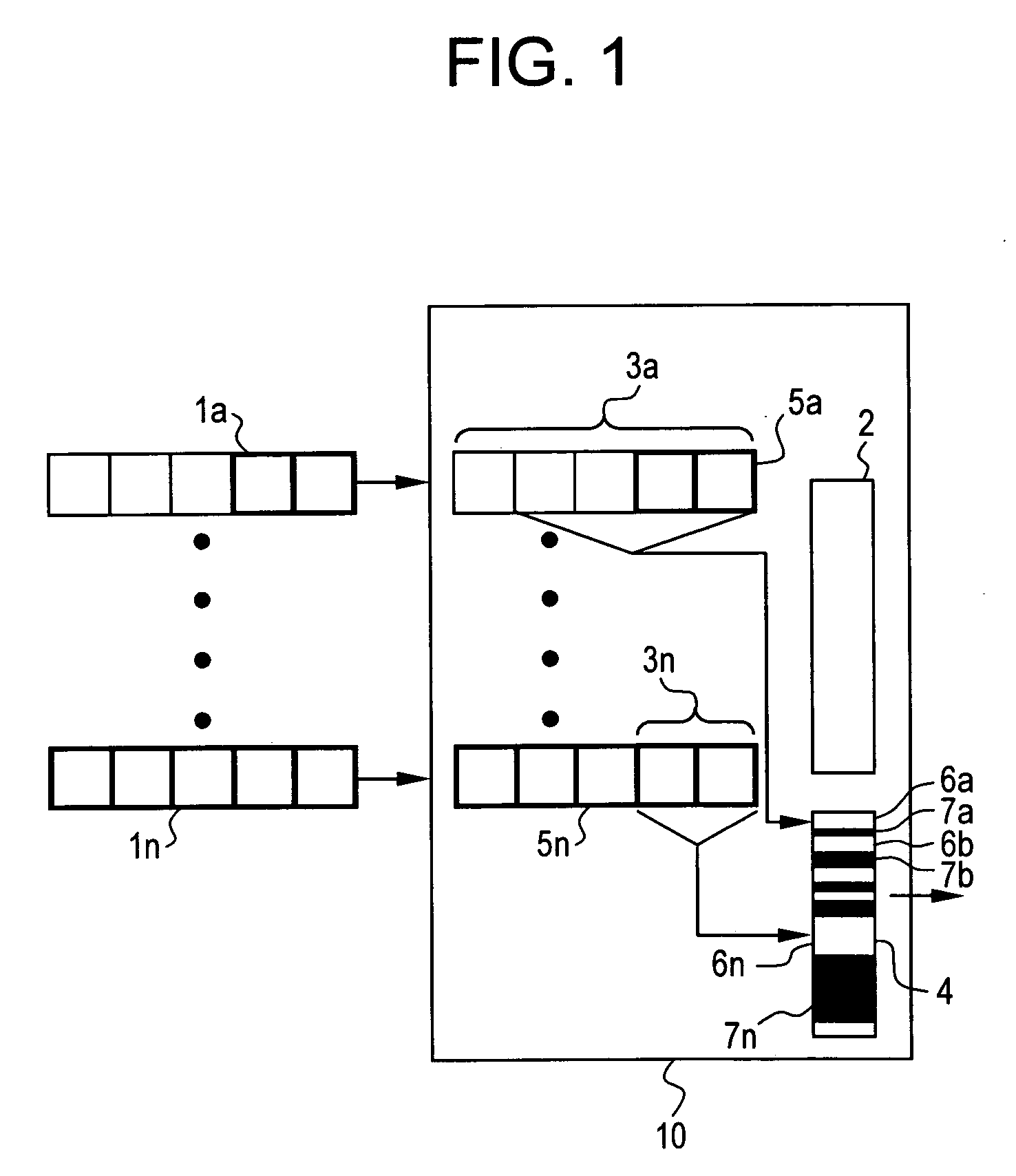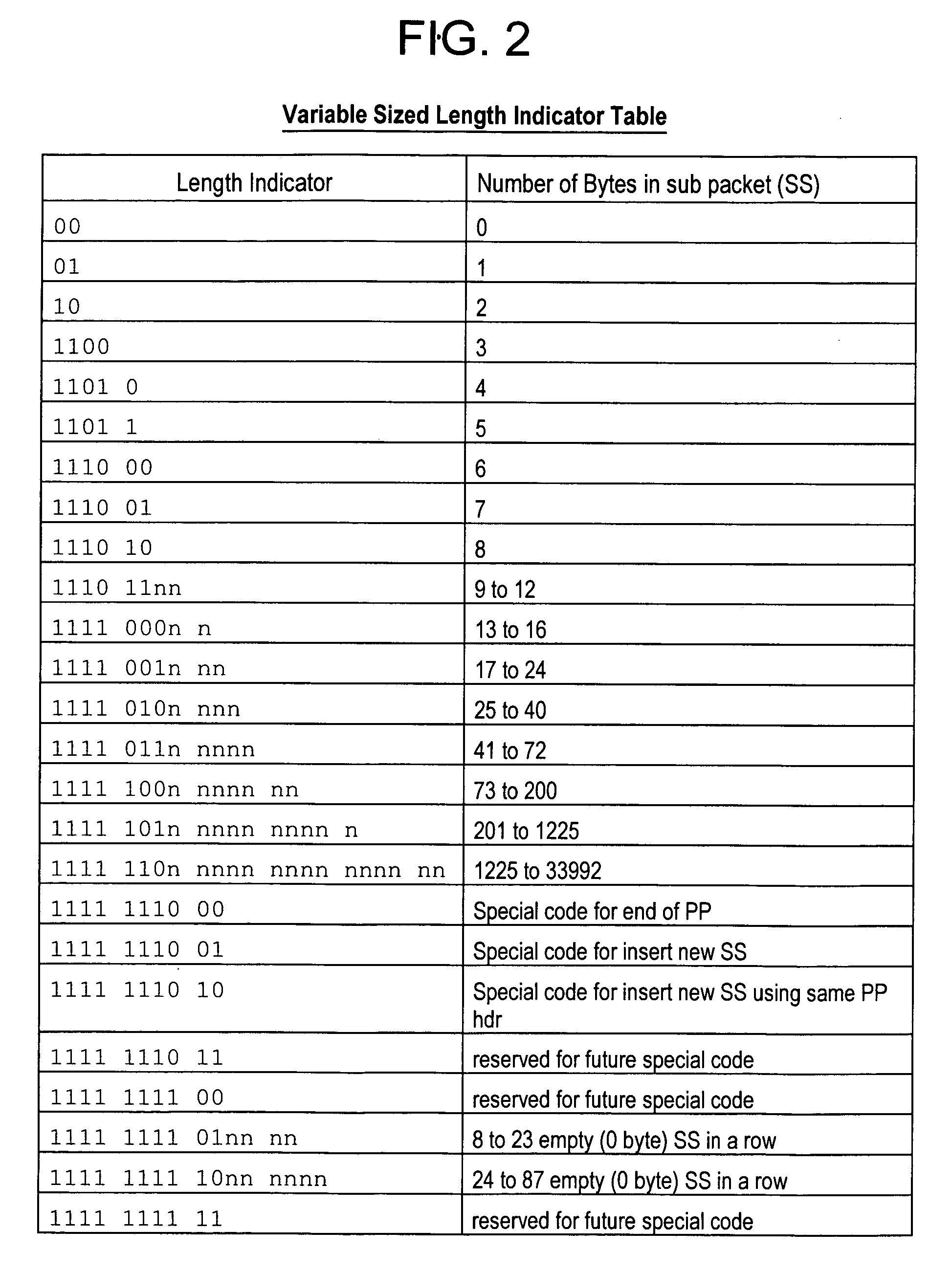Methods and devices for using variable length subpackets in data transmissions
a data transmission and variable length technology, applied in the field of methods and devices for using variable length subpackets in data transmission, can solve the problems of increasing complexity and cost, reducing the quality of real time services, and high cost of existing scheduling techniques, so as to achieve the effect of reducing the amount of overhead of a transmission
- Summary
- Abstract
- Description
- Claims
- Application Information
AI Technical Summary
Benefits of technology
Problems solved by technology
Method used
Image
Examples
Embodiment Construction
[0013]Referring to FIG. 1 there is shown so-called “Parent Packets” (PP) or whole packets 1a-1n (where “n’ represents the last PP) being received by one or more buffers 5a-5n. In accordance with an embodiment of the invention, a controller 2 or the like is operable to generate segmented, variable size subpackets from portions of the PPs 1a-1n received in the buffers 5a-5n, frame the subpackets and then control the transmission of the framed subpackets in a fixed, sequential order.
[0014]In more detail, at a given instant of time packets 3a making up a parent packet 1a are received and stored in buffer 5a, storage location, memory or the like. In accordance with the present invention, the controller 2 need not wait for the complete or whole parent packet 1a to be stored in the buffer 5a before transmitting some portion (e.g., packets 3a) of the parent packet 1a. Rather, the portion 3a of the parent packet 1a that has been stored in buffer 5a within a fixed time period may be transmitt...
PUM
 Login to View More
Login to View More Abstract
Description
Claims
Application Information
 Login to View More
Login to View More - R&D
- Intellectual Property
- Life Sciences
- Materials
- Tech Scout
- Unparalleled Data Quality
- Higher Quality Content
- 60% Fewer Hallucinations
Browse by: Latest US Patents, China's latest patents, Technical Efficacy Thesaurus, Application Domain, Technology Topic, Popular Technical Reports.
© 2025 PatSnap. All rights reserved.Legal|Privacy policy|Modern Slavery Act Transparency Statement|Sitemap|About US| Contact US: help@patsnap.com



